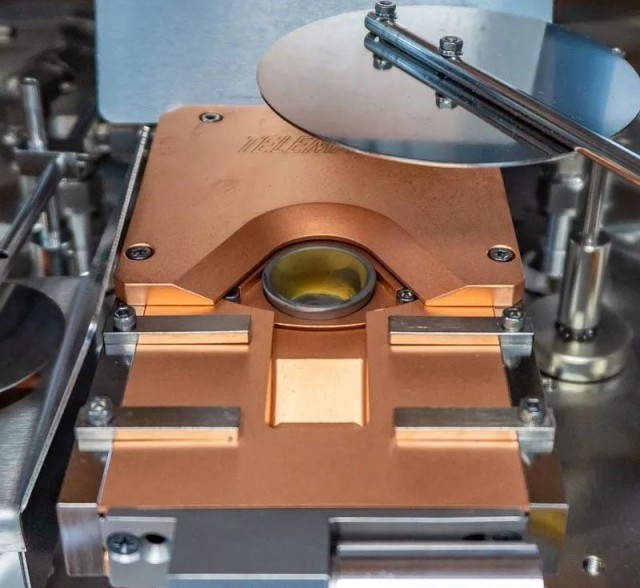Advantages of Electron Beam Evaporation Coating
High Purity Materials
E-beam evaporation operates within a high vacuum environment, which is instrumental in eliminating gas impurities. This process ensures that the resulting film maintains an exceptionally high purity. High-purity materials are indispensable in various advanced technologies, where even trace impurities can significantly alter the material's properties. These materials are crucial in applications ranging from the production of LEDs and plasma screens to high-precision optics and advanced ceramics.
For instance, in the creation of electronic sensors, the purity of the materials directly impacts the sensor's sensitivity and reliability. Similarly, in the development of lasers, any contamination can disrupt the coherent light emission, necessitating the use of materials that are as close to 100% pure as possible. The exact properties required often vary by application, but the common thread is the material's sensitivity to even minute chemical variations.
| Application Area | Material Purity Required |
|---|---|
| Electronic Sensors | 99.999% |
| High-Precision Optics | 99.995% |
| Advanced Ceramics | 99.99% |
| Semiconductor Devices | 99.9999% |
The high vacuum environment of E-beam evaporation not only purifies the materials but also allows for the deposition of these materials onto substrates with minimal contamination. This is particularly important in industries where the performance of the final product hinges on the purity of the starting materials. Companies like KINTEK offer a wide range of metals and elements in their purest forms, from Aluminum and Copper to Tungsten and Zirconium, ensuring that the demand for high-purity materials is met across various sectors.
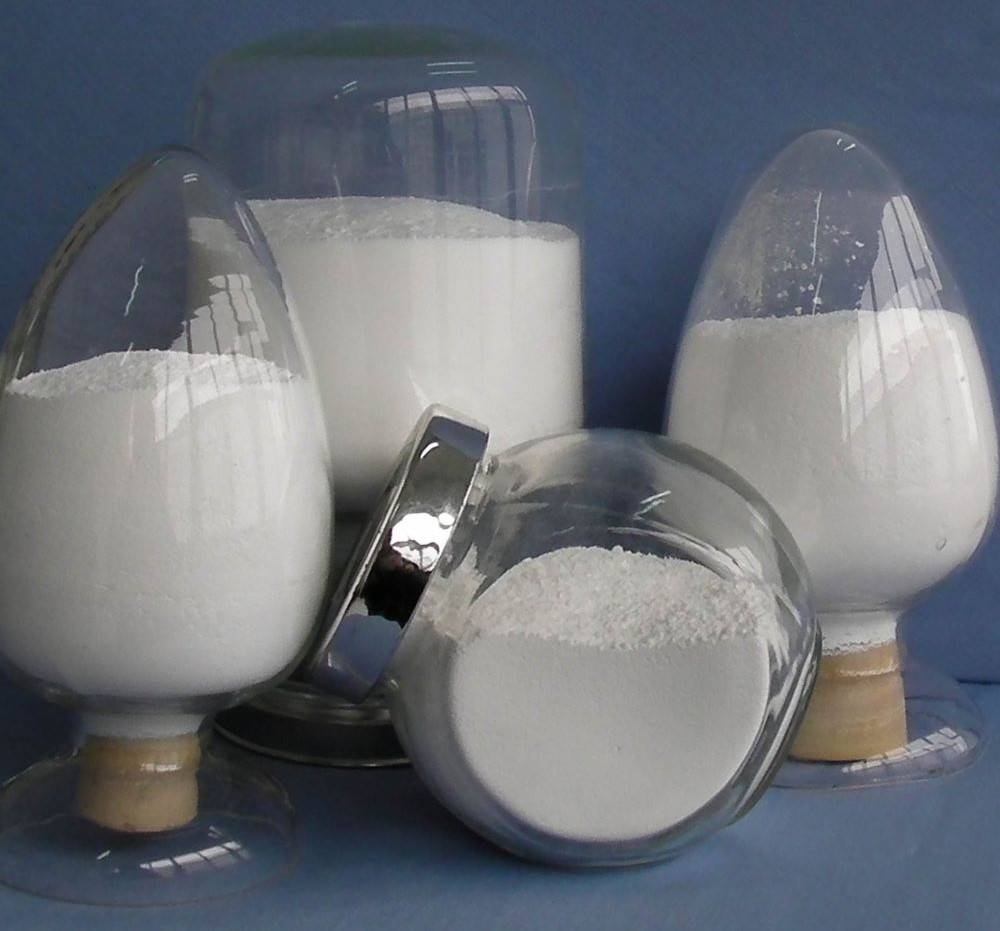
Good Film Quality
The high energy of the electron beam significantly enhances the quality of the deposited film, resulting in several notable characteristics. Firstly, the film exhibits excellent density, which is crucial for its mechanical and chemical stability. This high density minimizes the presence of voids and defects, which can otherwise compromise the film's performance in various applications.
Secondly, the uniformity of the film is another key advantage. The precise control over the electron beam's energy distribution ensures that the film is deposited evenly across the substrate. This uniformity is particularly important in applications such as optical coatings, where variations in thickness can lead to inconsistencies in optical properties like reflectivity and transmittance.
| Characteristic | Description | Importance |
|---|---|---|
| Density | High density minimizes voids and defects. | Enhances mechanical and chemical stability. |
| Uniformity | Even deposition across the substrate. | Ensures consistent optical properties in coatings. |
Moreover, the high energy of the electron beam facilitates the deposition of a wide range of materials, from metals and alloys to oxides and nitrides. This adaptability allows for the creation of films with tailored properties, meeting the diverse requirements of different industries.
In summary, the high energy of the electron beam not only ensures a dense and uniform film but also broadens the scope of materials that can be effectively deposited, making electron beam evaporation coating a versatile and powerful technique in various industrial applications.
Strong Control Flexibility
The precision in controlling the thickness and structure of the film is one of the standout features of electron beam evaporation coating. This control is achieved by fine-tuning several critical parameters, including the power of the electron beam, the position of the evaporation source, and the film deposition rate. Each of these parameters plays a pivotal role in determining the final characteristics of the deposited film.
For instance, adjusting the power of the electron beam allows for the precise control of the energy delivered to the evaporation source. This, in turn, influences the rate at which the material evaporates and condenses onto the substrate. Similarly, the position of the evaporation source is crucial. By strategically placing the source, it is possible to optimize the distribution of the evaporated material, ensuring uniform coverage across the substrate.
The deposition rate is another key factor. By modulating this rate, operators can achieve the desired film thickness with minimal deviation. This level of control is particularly important in applications where even the slightest variation in film thickness can significantly impact performance, such as in optical coatings or electronic devices.
Wide Adaptability
Electron beam evaporation coating boasts an impressive range of adaptability, making it a versatile choice for various industrial applications. This method is capable of evaporating a wide array of materials, including metals, alloys, oxides, and nitrides. The adaptability stems from the precise control over the evaporation process, which allows for the deposition of materials with different physical and chemical properties.
For instance, metals like aluminum, gold, and silver, which are commonly used in electronic devices and optical coatings, can be effectively evaporated using the electron beam technique. Similarly, complex alloys such as titanium nitride (TiN) and chromium nitride (CrN), known for their high hardness and wear resistance, can also be processed with this method. Additionally, oxides like silicon dioxide (SiO₂) and titanium dioxide (TiO₂), which are crucial in optical applications due to their refractive properties, can be reliably deposited.
This broad material compatibility ensures that electron beam evaporation can cater to diverse application needs, from enhancing the optical properties of lenses and mirrors to strengthening the surface of tools and mechanical parts. The ability to handle such a wide range of materials makes electron beam evaporation a preferred choice in industries where material flexibility and high-quality film deposition are paramount.
Small Thermal Impact
During the electron beam evaporation process, the thermal impact on the substrate is significantly minimized due to the localized heating of the evaporation source. This localized heating ensures that only the material being evaporated is subjected to high temperatures, while the surrounding environment and the substrate remain relatively cool. This characteristic makes electron beam evaporation an ideal choice for coating heat-sensitive materials, as it prevents thermal degradation and maintains the structural integrity of the substrate.
Moreover, the controlled nature of the electron beam's energy distribution allows for precise temperature management, further reducing the risk of thermal damage. This is particularly advantageous in applications where the substrate's thermal stability is critical, such as in the deposition of thin films on delicate optical lenses or in the semiconductor industry where temperature-sensitive electronic components are involved.
The reduced thermal impact also translates to better adhesion and overall film quality, as the substrate's properties remain unchanged during the coating process. This ensures that the final product not only meets the desired specifications but also exhibits superior performance and longevity.
Adjustable Deposition Rate
The deposition rate in electron beam evaporation is a critical parameter that can significantly influence the quality and properties of the deposited film. This rate is primarily controlled by the power of the electron beam, which acts as the heating source for the evaporation process. By fine-tuning the electron beam's power, operators can achieve precise control over the rate at which material is deposited onto the substrate.
For instance, higher power settings can accelerate the evaporation process, leading to a faster deposition rate. This is particularly useful when dealing with applications that require thicker film layers, such as in the production of optical coatings or hard coatings for tools and molds. Conversely, lower power settings allow for slower deposition rates, which are essential for creating ultra-thin films with exceptional uniformity and smoothness, as seen in electronic devices and optoelectronic display devices.
The adaptability of the deposition rate extends beyond just speed control. It also enables the process to accommodate a variety of substrate materials and geometries. For example, delicate substrates like those used in medical devices or temperature-sensitive components can benefit from a slower, more controlled deposition rate to minimize thermal stress and ensure the integrity of the coated surface.
Film Layer Uniformity
Achieving uniform film thickness is a critical aspect of electron beam evaporation coating, influencing the overall quality and performance of the deposited layers. Proper rotation and meticulous sample arrangement are essential to ensure that the film thickness is consistent across the entire substrate. This uniformity is not merely a matter of even distribution but also of maintaining the structural integrity and functional properties of the film.
For instance, in the deposition of optical coatings, any variation in film thickness can lead to unwanted optical effects such as color shifts or reduced transmittance. Similarly, in electronic devices, non-uniform film layers can result in inconsistent electrical properties, potentially causing performance issues in integrated circuits or sensors.
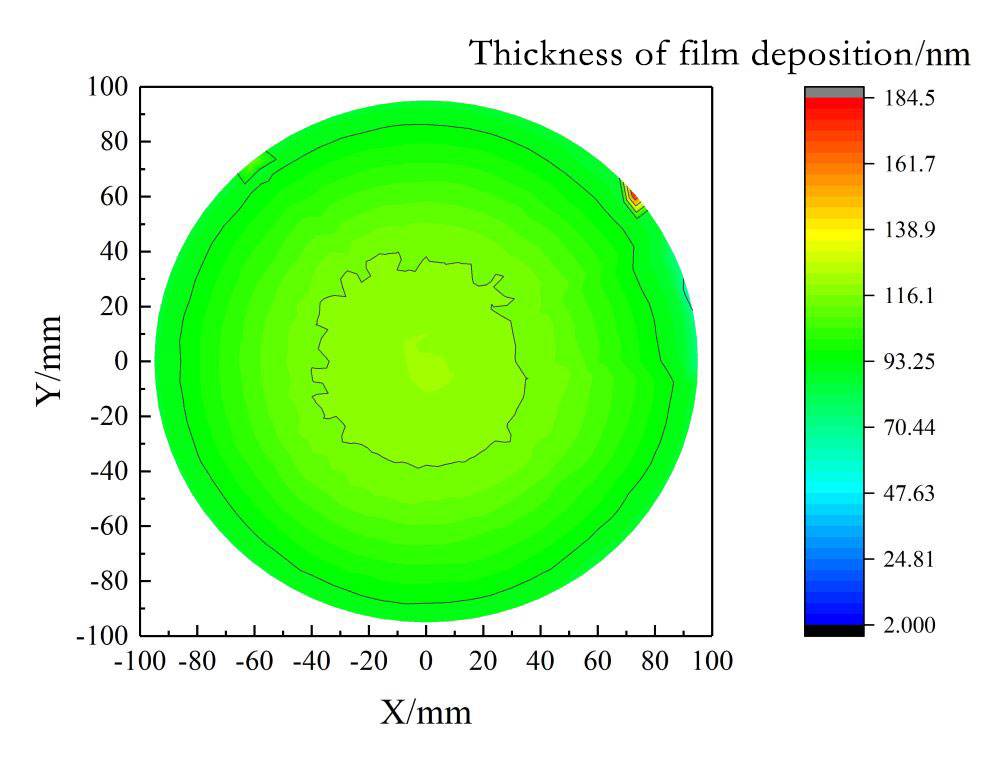
To achieve optimal uniformity, several factors must be carefully controlled:
- Rotation Speed: The substrate holder must rotate at a consistent speed to ensure even exposure to the evaporated material.
- Evaporation Rate: The rate at which the material is evaporated must be steady to prevent localized thickening or thinning of the film.
- Beam Focus: The electron beam must be precisely focused to maintain a consistent energy distribution across the evaporation source.
- Substrate Positioning: The substrate must be accurately positioned relative to the evaporation source to ensure uniform deposition.
| Factor | Importance |
|---|---|
| Rotation Speed | Ensures even exposure to evaporated material |
| Evaporation Rate | Prevents localized thickening or thinning |
| Beam Focus | Maintains consistent energy distribution |
| Substrate Positioning | Ensures uniform deposition |
By fine-tuning these parameters, manufacturers can achieve highly uniform film layers, thereby enhancing the overall performance and reliability of the coated products.
Disadvantages of Electron Beam Evaporation Coating
High Equipment Cost
Electron beam evaporation coating equipment represents a significant financial commitment, characterized by high initial investment and ongoing maintenance expenses. This equipment is classified as high-end, requiring specialized components and sophisticated technology to operate effectively. The procurement of such machinery often necessitates substantial capital outlays, which can be prohibitive for small laboratories or start-ups with limited budgets.
Moreover, the maintenance of electron beam evaporation systems is not only costly but also complex. Regular upkeep is essential to ensure the equipment's longevity and optimal performance, necessitating the expertise of trained professionals. These maintenance requirements can further strain the resources of smaller entities, making it challenging for them to sustain the necessary operational standards.
In addition to the direct costs, the indirect expenses associated with downtime and potential equipment failures can be substantial. Smaller organizations may find it difficult to absorb these additional costs, which could impact their overall research and development capabilities. Consequently, while the technology offers numerous benefits, its high cost remains a critical consideration for potential adopters.
Low Production Efficiency
Compared to other coating technologies such as sputter coating and chemical vapor deposition (CVD), electron beam evaporation typically exhibits a slower deposition rate. This inherent characteristic poses significant challenges when it comes to meeting the rigorous demands of mass production environments. The slower deposition rate can lead to extended processing times, which in turn can increase production costs and limit the scalability of the coating process.
For instance, while sputter coating and CVD can achieve deposition rates of several micrometers per minute, electron beam evaporation often lags behind, typically achieving rates in the range of tens to hundreds of nanometers per minute. This disparity becomes particularly evident in high-throughput manufacturing scenarios where rapid coating is essential.
| Coating Technology | Typical Deposition Rate | Suitability for Mass Production |
|---|---|---|
| Electron Beam Evaporation | Tens to hundreds of nm/min | Less suitable due to slower rate |
| Sputter Coating | Several micrometers/min | More suitable |
| Chemical Vapor Deposition (CVD) | Several micrometers/min | More suitable |
The slower deposition rate of electron beam evaporation can also impact the overall efficiency of the production line, necessitating additional measures such as optimizing process parameters or integrating parallel coating units to mitigate the bottleneck. Despite these efforts, the fundamental limitation remains, making it a less favorable choice for industries requiring high-speed, large-scale coating operations.
Limited Range of Materials
While electron beam evaporation is capable of handling a broad spectrum of materials, including metals, alloys, oxides, and nitrides, it faces challenges when it comes to high melting point materials or specialized alloys. These materials often require temperatures beyond the capabilities of traditional electron beam evaporation systems, leading to incomplete evaporation or uneven coating.
For instance, certain refractory metals like tungsten and molybdenum, which have melting points exceeding 3000°C, can pose significant difficulties. The high energy required to vaporize these materials often results in localized overheating, which can degrade the quality of the coating. Additionally, alloys with complex compositions may exhibit phase separation or chemical reactions during the evaporation process, further complicating the deposition of a uniform and stable film.
| Material Type | Evaporation Challenges |
|---|---|
| High Melting Point Metals | Requires extremely high energy, leading to potential overheating and film degradation. |
| Special Alloys | May experience phase separation or chemical reactions, affecting film uniformity. |
These limitations necessitate the development of advanced techniques and equipment modifications to accommodate a wider range of materials, ensuring the continued relevance and effectiveness of electron beam evaporation in various industrial applications.
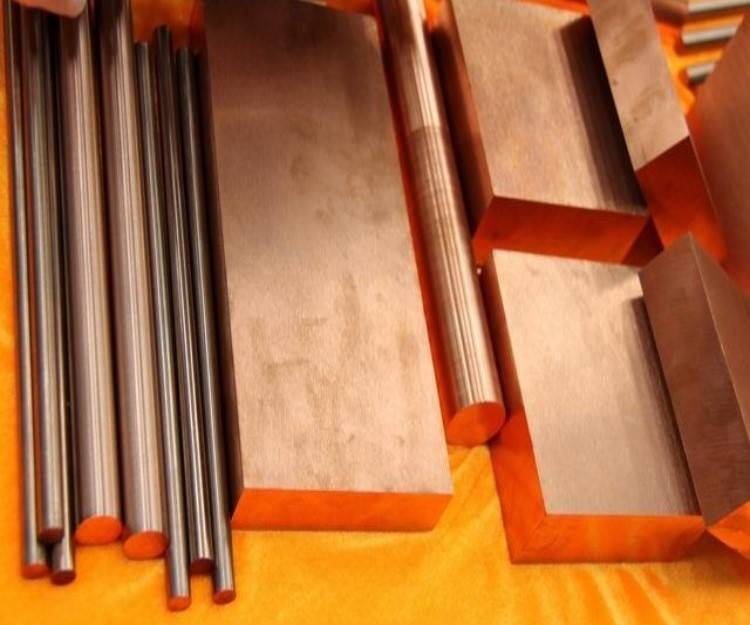
Film Stress Problems
During the electron beam evaporation coating process, variations in deposition rate and film thickness can lead to significant stresses within the film layer. These stresses can manifest in various forms, including tensile and compressive forces, which can have profound effects on the overall integrity and performance of the coated material.
One of the primary issues arising from these stresses is the potential for reduced adhesion between the film and the substrate. When the film experiences internal stresses, it can pull away from the substrate, leading to delamination. This not only compromises the structural integrity of the coating but also diminishes its functional properties, such as optical clarity, electrical conductivity, or mechanical strength.
Moreover, the stability of the film is directly affected by these stresses. High levels of stress can cause the film to crack or deform over time, especially under operational conditions that subject the coating to thermal cycling, mechanical strain, or chemical exposure. This instability can render the coating ineffective, necessitating costly repairs or replacements.
To mitigate these issues, it is crucial to carefully control the deposition parameters, such as the power of the electron beam, the position of the evaporation source, and the overall deposition rate. Advanced monitoring and feedback systems can help maintain a consistent film thickness and minimize stress accumulation. Additionally, post-deposition treatments, such as annealing or stress-relieving techniques, can be employed to reduce residual stresses and enhance the long-term stability of the coating.
Limited Film Layer Uniformity
While electron beam evaporation can achieve uniform film deposition under optimal conditions, several factors can still lead to non-uniformity. Improper positioning of the sample or inadequate focusing of the electron beam are common culprits. These issues can result in variations in film thickness across the substrate, which can compromise the performance and reliability of the coated material.
For instance, if the electron beam is not properly aligned, it may not uniformly heat the evaporation source, leading to localized areas of thicker or thinner film deposition. Similarly, if the sample is not positioned correctly within the evaporation chamber, the distribution of the evaporated material may be uneven, causing variations in film thickness.
| Potential Causes | Impact on Film Uniformity |
|---|---|
| Misaligned Electron Beam | Localized thick or thin areas |
| Improper Sample Positioning | Uneven material distribution |
| Inadequate Vacuum Conditions | Increased gas impurities, affecting deposition |
| Varied Deposition Rates | Stress and cracks in the film layer |
Addressing these issues requires meticulous attention to detail during the setup and operation of the electron beam evaporation process. Advanced alignment techniques and precise control mechanisms can help mitigate these challenges, ensuring a more uniform film layer. However, even with these improvements, achieving perfect uniformity remains a complex task that demands continuous refinement and optimization of the process parameters.
Heat-Affected Zones
While the thermal impact of the electron beam evaporation process is generally minimal, certain substrates may still experience thermal damage under specific conditions. This is particularly pertinent for temperature-sensitive materials, where even a small increase in temperature can lead to irreversible alterations in the substrate's properties. The localized heating of the evaporation source, though beneficial in reducing overall thermal stress, can still create localized heat-affected zones (HAZ) on the substrate. These zones can vary in size and severity, depending on factors such as the power of the electron beam, the duration of the evaporation process, and the thermal conductivity of the substrate material.
For instance, in the deposition of thin films on optical lenses or medical devices, where maintaining the integrity of the substrate is crucial, these HAZ can pose significant challenges. In such cases, it is essential to monitor and control the thermal conditions closely to prevent any potential damage. Techniques such as adjusting the deposition rate, using cooling mechanisms, or employing alternative coating methods may be necessary to mitigate the risks associated with thermal stress.
Moreover, the potential for thermal damage underscores the importance of thorough pre-treatment and post-treatment processes. Proper cleaning and conditioning of the substrate prior to coating can enhance its thermal resilience, while post-treatment processes can help in identifying and addressing any thermal anomalies that may have occurred during the evaporation process. This dual approach ensures that the final product not only meets the desired functional requirements but also retains its structural and mechanical integrity.
Must Operate Under High Vacuum
Operating under high vacuum is a critical requirement for electron beam evaporation, necessitating meticulous design and operation of the equipment. The process demands an ultra-high vacuum environment, which typically involves custom-built systems made from stainless steel with metal-gasketed vacuum flanges. These systems are often baked, preferably under vacuum, to elevate the vapor pressure of outgassing materials temporarily, facilitating their removal. This baking process can be supplemented with room-temperature outgassing, albeit at the cost of extended timeframes.
Once the bulk of the outgassing materials are evacuated, the system is cooled to minimize residual outgassing during actual operation. In some cases, systems are cooled below room temperature using liquid nitrogen to further suppress outgassing and simultaneously cryopump the system. This multi-faceted approach underscores the complexity and precision required for maintaining the high vacuum conditions essential for electron beam evaporation.
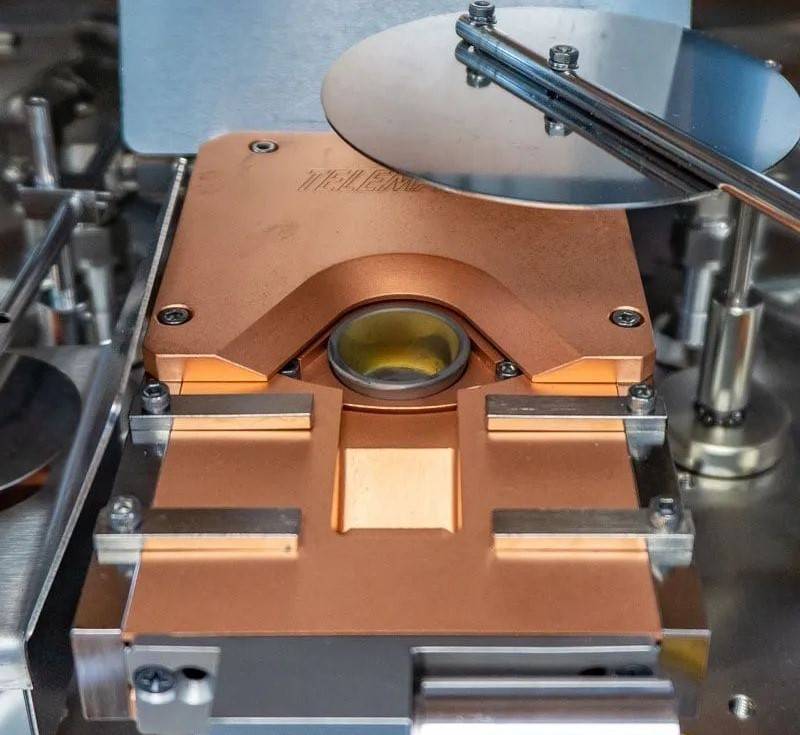
Strict Pre-Treatment Requirements
The surface of the substrate must undergo rigorous pre-treatment processes to ensure the optimal adhesion and quality of the film layer. This pre-treatment involves several critical steps, including cleaning, degreasing, and etching, which collectively aim to remove any contaminants and prepare the surface for optimal film deposition.
-
Cleaning and Degreasing: The substrate is first cleaned to remove any organic contaminants, oils, or residues that could compromise the adhesion of the film. This is typically achieved through ultrasonic cleaning or solvent baths, ensuring a pristine surface.
-
Etching: Following cleaning, the substrate may undergo etching to enhance surface roughness and create a more reactive surface. This step can involve chemical etching or ion beam etching, which not only cleans the surface but also microscopically roughens it, promoting better mechanical interlocking with the film.
-
Surface Activation: In some cases, the substrate surface is activated to improve its chemical reactivity. This can involve techniques such as plasma treatment, which introduces reactive species that enhance the bonding between the substrate and the film material.
These pre-treatment steps are crucial because even the smallest contaminants or imperfections can lead to weak film adhesion, voids, or non-uniformity, significantly affecting the overall quality and performance of the coated product. Therefore, strict adherence to these pre-treatment requirements is non-negotiable in the electron beam evaporation coating process.
Applications of Electron Beam Evaporation Coating
Optical Coatings
Optical coatings are meticulously applied to a variety of optical components, including lenses, glass, and mirrors, to enhance their performance across a spectrum of applications. These coatings serve multiple purposes, primarily improving the optical properties of the materials they are applied to. For instance, they can significantly boost the reflectivity of mirrors, allowing for more efficient reflection of light. Similarly, they can enhance the transmittance of lenses, ensuring that more light passes through without significant loss.
One of the critical functions of optical coatings is their ability to reduce reflection, a property known as anti-reflective coating. This is particularly useful in applications where minimizing light loss is crucial, such as in high-precision optical instruments or solar panels. Anti-reflective coatings work by minimizing the interference of light waves, thereby reducing the amount of light that is reflected away from the surface.
In addition to their use in standard optical components, optical coatings are also integral to advanced technologies like optical data storage devices. Here, they act as protective layers, shielding the sensitive components from environmental factors that could cause degradation or data loss. For example, in optical fibers, coatings are applied to improve the refractive index and absorption coefficient, ensuring that data transmission remains efficient and error-free over long distances.
High reflective coatings are another critical application, particularly in laser optics. These coatings are achieved by depositing thin films of highly reflective materials, such as metals, onto the surface of the optical component. This process is essential for creating mirrors with high reflectivity, which are necessary for the efficient operation of laser systems.
Infrared reflecting coatings are used in specialized applications, such as filament lamps, to increase the luminous flux intensity. By reflecting infrared light back towards the filament, these coatings help to maintain a higher temperature, thereby enhancing the overall efficiency of the lamp.
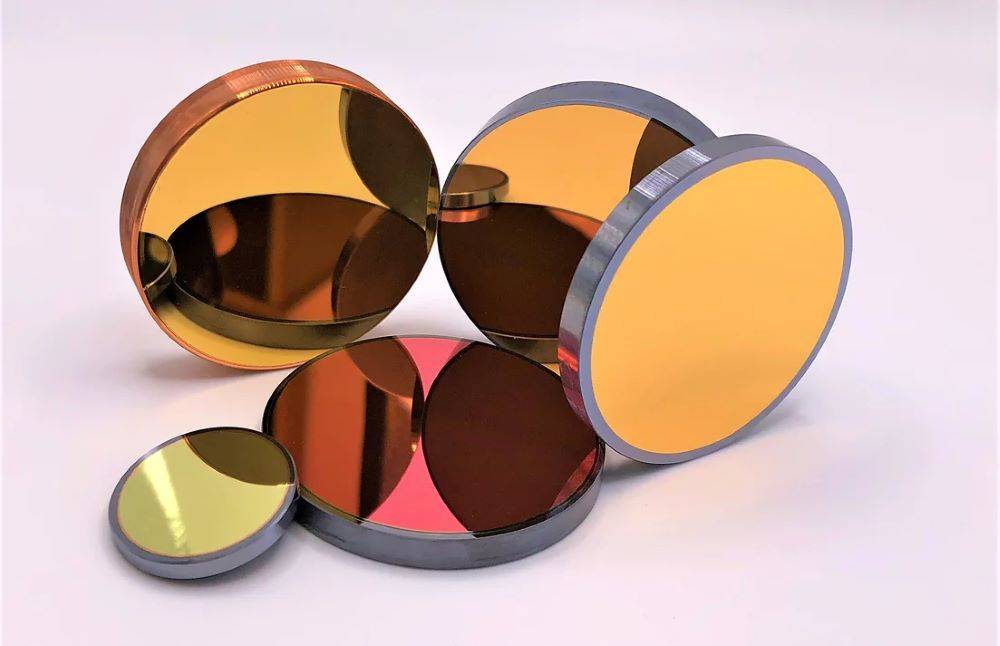
Electronic Devices
In the semiconductor industry, electron beam evaporation is a critical process for the preparation of metal and insulating layers, which are essential components for a wide array of electronic devices. This technology is particularly advantageous for creating high-quality films that are integral to the performance of integrated circuits (ICs), optoelectronic devices, and sensors.
For instance, in the fabrication of integrated circuits, the precise control over film thickness and uniformity offered by electron beam evaporation ensures that the resulting layers meet the stringent requirements for conductivity and insulation. This precision is equally vital in the production of optoelectronic devices, where the quality of the deposited layers directly impacts the efficiency and reliability of light emission and detection processes.
Moreover, sensors, which are integral to various applications ranging from environmental monitoring to medical diagnostics, benefit from the high purity and controlled deposition rates provided by electron beam evaporation. The ability to deposit thin films of materials such as oxides and nitrides with minimal thermal impact on the substrate makes this technique particularly suitable for the delicate and complex structures of modern sensors.
Thin Film Solar Cells
In the photovoltaic industry, electron beam evaporation plays a pivotal role in the deposition of thin films, such as Indium Gallium Arsenide (InGaAs), which are essential for enhancing the efficiency of solar cells. This process is particularly significant in the context of renewable energy, where the need for sustainable and efficient energy production methods is paramount.
Thin film solar cells, which rely on layers of silicon thin films deposited on substrates like glass or metal, have emerged as a flexible and cost-effective alternative to traditional crystalline silicon cells. These cells are not only lighter but also more adaptable for various applications, including photovoltaic glazing. The use of amorphous silicon, a non-crystalline form of silicon, further reduces production costs and scales the manufacturing of thin film panels.
The role of electron beam evaporation in this process cannot be overstated. It allows for the precise control of film thickness and uniformity, which are critical factors in determining the overall efficiency and performance of solar cells. By leveraging the high energy of the electron beam, this technique ensures that the deposited films have high density and uniformity, thereby maximizing the solar cell's ability to convert sunlight into electricity.
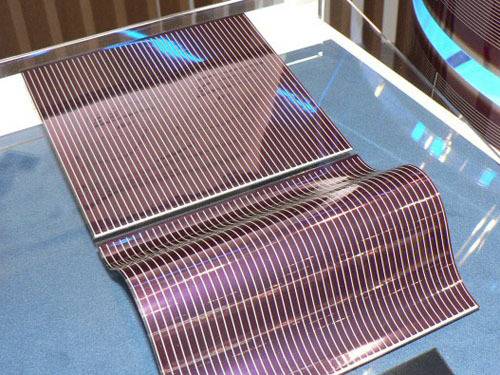
Moreover, the adaptability of electron beam evaporation to a wide range of materials, including metals, alloys, oxides, and nitrides, makes it a versatile tool in the photovoltaic industry. This flexibility enables the development of advanced solar cell technologies that can meet the evolving demands of the renewable energy sector.
Surface Treatment
Electron beam evaporation coating is extensively employed in the surface treatment of various materials, including metals, plastics, and ceramics. This process significantly enhances the durability and performance of these materials by imparting superior properties such as increased corrosion resistance, enhanced hardness, and improved abrasion resistance. These improvements are crucial for extending the service life of products across multiple industries.
For instance, in the automotive sector, coatings applied through electron beam evaporation can protect critical components from the harsh environmental conditions they encounter, thereby reducing maintenance costs and downtime. Similarly, in the aerospace industry, where materials are subjected to extreme temperatures and pressures, such coatings ensure the longevity and reliability of crucial parts.
Moreover, in medical devices, the surface treatment provided by electron beam evaporation can enhance biocompatibility and antimicrobial properties, making these devices safer and more effective. This application is particularly important in orthopedic implants and surgical instruments, where durability and safety are paramount.
Hard Coatings
Hard coatings, applied to tools, molds, and mechanical parts, serve as a critical layer that significantly enhances their wear resistance and heat resistance. This application is particularly beneficial in industries where these components are subjected to extreme conditions, such as high-speed machining or high-temperature environments. By providing a protective barrier, hard coatings help to prolong the operational life of these essential tools and parts, thereby reducing maintenance costs and downtime.
The effectiveness of hard coatings can be attributed to their ability to form a dense, uniform layer that adheres strongly to the substrate. This is often achieved through processes like electron beam evaporation, which allows for precise control over the thickness and composition of the coating. The high energy of the electron beam ensures that the coating material is evenly distributed, resulting in a film with excellent mechanical properties.
Moreover, hard coatings can be tailored to meet specific requirements by adjusting the deposition parameters. For instance, different materials can be used to achieve varying degrees of hardness, thermal conductivity, and chemical stability. This adaptability makes hard coatings a versatile solution for a wide range of applications, from industrial machinery to consumer goods.
Optoelectronic Display Devices
Electron beam evaporation plays a crucial role in the fabrication of optoelectronic display devices, particularly in the creation of Organic Light Emitting Diode (OLED) displays. The process involves the deposition of electrodes and various functional layers, which are essential for the operation and performance of these displays.
Electrodes
In OLED displays, electrodes serve as the interface between the electrical components and the organic layers. Electron beam evaporation is used to deposit materials such as indium tin oxide (ITO) and aluminum, which are known for their excellent conductivity and transparency. The precise control over the deposition process ensures that the electrodes are uniformly thin, which is vital for maintaining the display's brightness and clarity.
Functional Layers
Beyond electrodes, electron beam evaporation is employed to create a range of functional layers that enhance the performance of OLED displays. These include:
-
Emissive Layers: These layers are responsible for emitting light when an electric current passes through them. Materials like organic small molecules and polymers are commonly used, and their uniform deposition is critical for achieving consistent light emission.
-
Hole Transport Layers (HTL) and Electron Transport Layers (ETL): These layers facilitate the movement of charge carriers (holes and electrons) within the OLED structure. The precise control of layer thickness and uniformity ensures efficient charge transport, which is essential for the display's efficiency and lifespan.
-
Encapsulation Layers: To protect the sensitive organic materials from environmental factors like moisture and oxygen, encapsulation layers are deposited using electron beam evaporation. These layers are typically made of materials like silicon nitride (SiNx) and silicon dioxide (SiO2), which provide a barrier against external contaminants.

The ability to precisely control the deposition parameters, such as the power of the electron beam and the deposition rate, allows for the creation of high-quality, uniform layers that are essential for the optimal performance of optoelectronic display devices. This makes electron beam evaporation an indispensable technique in the manufacturing of advanced display technologies.
Medical Devices
Electron beam evaporation coating plays a pivotal role in enhancing the functionality and safety of medical devices. By applying specific functional films, this technology significantly improves the biocompatibility of medical implants and instruments, ensuring they interact favorably with human tissues without causing adverse reactions.
Moreover, the antimicrobial properties imparted by these coatings help in reducing the risk of infections, particularly in devices that are in direct contact with bodily fluids or tissues. This is especially crucial in the context of implants like stents and prosthetics, where infection can lead to severe complications.
In addition to biocompatibility and antimicrobial features, these coatings also promote tissue regeneration. For instance, in orthopedic implants, the coatings can facilitate bone growth and integration, accelerating the healing process. This dual benefit of enhancing device functionality and promoting patient recovery underscores the importance of electron beam evaporation coating in the medical device industry.
Sensor Technology
The application of electron beam evaporation in sensor technology is pivotal for the preparation of sensitive layers and electrodes. This technique is particularly advantageous in gas sensors, where the need for high sensitivity and accuracy is paramount. The high vacuum environment of electron beam evaporation ensures that the sensitive layers are free from contaminants, thereby enhancing the sensor's performance.
One of the key benefits of using electron beam evaporation in sensor technology is the precise control over the film's thickness and uniformity. This precision is crucial for the performance of sensors, as even minor variations can significantly impact their sensitivity and response time. By adjusting parameters such as the power of the electron beam and the deposition rate, engineers can tailor the film characteristics to meet specific sensor requirements.
Moreover, the adaptability of electron beam evaporation allows for the deposition of a wide range of materials, including metals, alloys, and compounds, which are essential for creating diverse sensor types. For instance, in gas sensors, the ability to deposit oxides and nitrides with high purity and uniformity is critical for detecting various gases accurately.
In addition to gas sensors, electron beam evaporation is also employed in other sensor types, such as those used in medical diagnostics and environmental monitoring. The process's ability to minimize thermal impact on the substrate makes it suitable for coating temperature-sensitive materials, ensuring that the sensor's integrity and functionality are preserved.
| Application | Material Deposited | Key Benefit |
|---|---|---|
| Gas Sensors | Oxides, Nitrides | High Purity, Uniformity |
| Medical Sensors | Metals, Alloys | Minimized Thermal Impact |
| Environmental Sensors | Compounds | Wide Material Adaptability |
Packaging of Integrated Circuits
The packaging of integrated circuits (ICs) is a critical process that involves the deposition of metal layers to ensure optimal electrical properties and reliability. This step is essential for protecting the delicate semiconductor materials and ensuring that the final product functions as intended in various environments.
One of the key techniques employed in this process is electron beam evaporation coating. This method allows for the precise deposition of metal layers, which are crucial for the interconnects and protective layers within the IC package. The high purity of the materials used in this process, achieved through the high vacuum environment, ensures that the deposited layers are free from contaminants that could affect the electrical performance of the IC.
The film quality produced by electron beam evaporation is typically of high density and uniformity, which is vital for maintaining consistent electrical properties across the IC. This uniformity is achieved by carefully controlling parameters such as the power of the electron beam, the position of the evaporation source, and the deposition rate. These adjustments allow for the creation of layers that are both structurally sound and electrically efficient.
Moreover, the adaptability of electron beam evaporation makes it suitable for a wide range of materials, including metals, alloys, oxides, and nitrides. This versatility is particularly important in the context of IC packaging, where different materials may be required for various functional layers within the package.
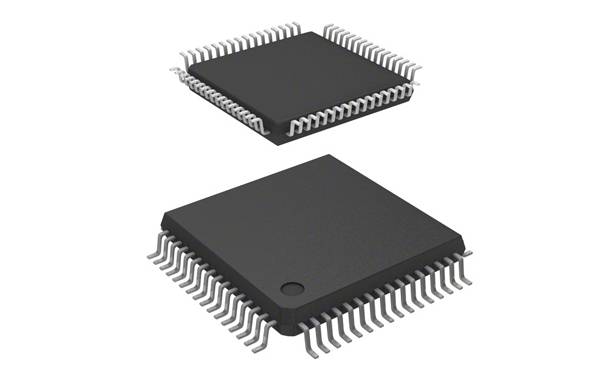
High-Performance Coatings
In high-end manufacturing sectors such as aerospace and automotive, the demand for superior performance and durability in components is paramount. Electron beam evaporation coating stands out as a critical technology in meeting these exacting standards. This method allows for the deposition of high-purity, dense, and uniform coatings on various materials, significantly enhancing their resistance to wear, corrosion, and thermal degradation.
For instance, in the aerospace industry, where components are exposed to extreme conditions, such as high temperatures and corrosive environments, the use of electron beam evaporation coatings can provide the necessary protection. These coatings often include materials like titanium nitride (TiN) or chromium nitride (CrN), which offer exceptional hardness and thermal stability. Similarly, in the automotive sector, coatings applied through this technique can improve the longevity of critical parts, such as engine components and braking systems, by reducing friction and wear.
The adaptability of electron beam evaporation to a wide range of materials, including metals, alloys, oxides, and nitrides, makes it a versatile solution for these industries. Moreover, the precise control over the thickness and structure of the deposited films ensures that the coatings are tailored to meet specific performance requirements. This level of customization is essential in high-performance applications where even minor imperfections can lead to significant operational failures.
Related Products
- Electron Beam Evaporation Coating Tungsten Crucible and Molybdenum Crucible for High Temperature Applications
- Electron Beam Evaporation Coating Oxygen-Free Copper Crucible and Evaporation Boat
- High Purity Pure Graphite Crucible for Electron Beam Evaporation
- Electron Beam Evaporation Coating Conductive Boron Nitride Crucible BN Crucible
- E Beam Crucibles Electron Gun Beam Crucible for Evaporation
Related Articles
- A Comparative Study of Evaporation and Sputtering Techniques in Thin Film Deposition
- Selecting Vacuum Coating Materials: Key Factors and Considerations
- Electron Beam Evaporation Coating: Principles, Characteristics, and Applications
- Challenges in the Development and Application of Tantalum in Vacuum Deposition Equipment
- Vacuum Melting Furnace: A Comprehensive Guide to Vacuum Induction Melting
